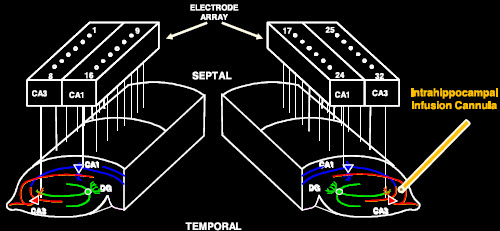Memory implants
May 1, 2013

Electrode array for monitoring and duplicating hippocampus neuron activity (credit: T. Berger et al./Journal of Neural Engineering)
Teodore Berger, a biomedical engineer and neuroscientist at the University of Southern California in Los Angeles, envisions a day in the not too distant future when a patient with severe memory loss can get help from an electronic implant, MIT Technology Review reports.
In people whose brains have suffered damage from Alzheimer’s, stroke, or injury, disrupted neuronal networks often prevent long-term memories from forming. For more than two decades, Berger has designed silicon chips to mimic the signal processing that those neurons do when they’re functioning properly — the work that allows us to recall experiences and knowledge for more than a minute. Ultimately, Berger wants to restore the ability to create long-term memories by implanting chips like these in the brain.
The idea is so audacious and so far outside the mainstream of neuroscience that many of his colleagues, says Berger, think of him as being just this side of crazy. “They told me I was nuts a long time ago,” he says with a laugh, sitting in a conference room that abuts one of his labs. But given the success of recent experiments carried out by his group and several close collaborators, Berger is shedding the loony label and increasingly taking on the role of a visionary pioneer.
Berger and his research partners have yet to conduct human tests of their neural prostheses, but their experiments show how a silicon chip externally connected to rat and monkey brains by electrodes can process information just like actual neurons. …
(More)
